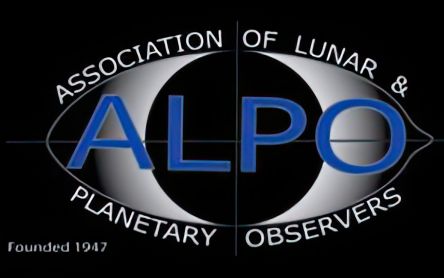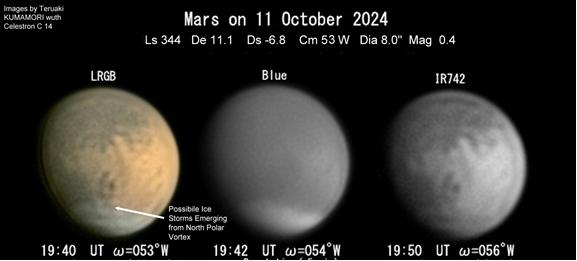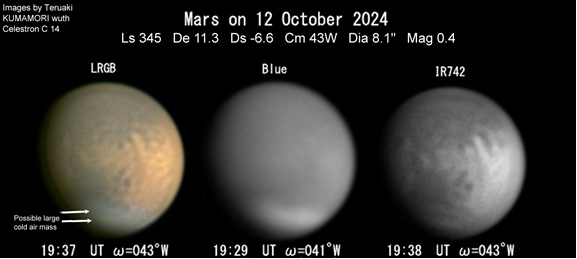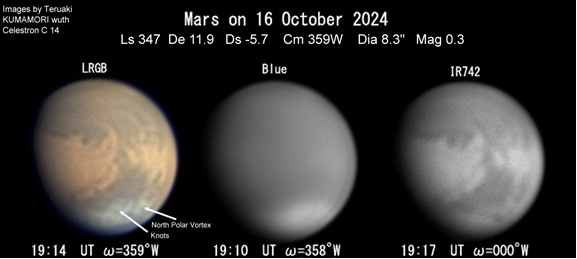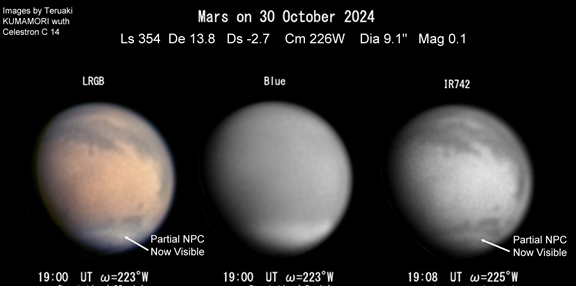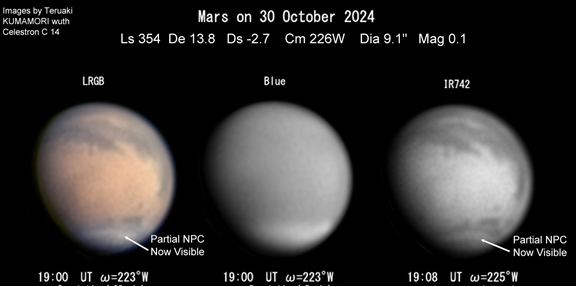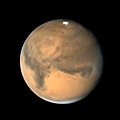
Mars Apparition Notes
by Jim Melka

The 2024-2025 Mars apparition is underway! Be sure to check here for updates and examples of observations from your fellow observers. You can send your images and sketches to Mars@alpo-astronomy.org for inclusion in our online gallery and review by the section coordinators (please do follow the file naming guidelines when doing so.)
Bright dust clouds were imaged in and around Erythraeum Mare in mid-Summer. See the August 20, 21 and 22, 2024 images below recorded by Gary Walker with a 10" A-P Mak-Cass. in Georgia USA. The leftmost image was recorded by Mike Wolle on August 14th using an 18" Newtonian in Knittefield, Austria. It shows the region before the dust storms. The atmosphere looks like it is saturated in dust. The Aug. 20th image shows a large dust cloud in Eos and one in a kilometers-long band in Erythraeum Mare. Further south is another kilometers-long band stretching from Argyre to Ogygis Regio. The August 21st image shows the two dust bands consolidated and stretching westward covering Bosporous and Solis Lacus. The dark area southwest of Aurora Sinus is the western end of Erythraeum Mare. The August 22nd image shows a mostly clear Erythraeum Mare and a large, very bright dust cloud over Solis Lacus. It also shows a large swath of dust stretching from Argyre II through Australe in the South Polar Region and curving into Daedalia along the morning limb. The blue clouds in the North Polar Region show changes occurring in what is generally referred to as the North Polar Hood.
Gary Walker also recorded the August 24, 25, 26 and 28 images below. I think they show the aftermath of the dust storms with much of the dust deposited on the ground. However, there is still some much-reduced airborne dust on August 24th and 25th. Normal features are now becoming visible in the August 26th and 28th images. The North Polar Hood activity has increased.
Mars News Headlines
What Makes Mars Red?
2/25/2025
Read More
Unraveling the Spiders on Mars
9/11/2024
No,
it’s not a throwback
to David Bowie – NASA has been studying “spiders”
on Mars and scientists at JPL think they have a better understanding of
how they form. Discovered in 2003 via images from orbiters and more
formally termed “Araneiform Terrain”, they appear as spider-like
clusters of dark lines in Mars’ southern
hemisphere. Recent experiments support the hypothesis that they form as
the ground under the carbon dioxide ice is warmed and sublimates the
ice, eventually cracking it and spewing out the dark material.
Read More
Event Calendar
Jan 28, 2026
Mars slips below 14" in size
Feb 09, 2026
Mars slips below 13" in size
Feb 18, 2026
Mars slips below 12" in size
